Publications»
«Publications
Publications in

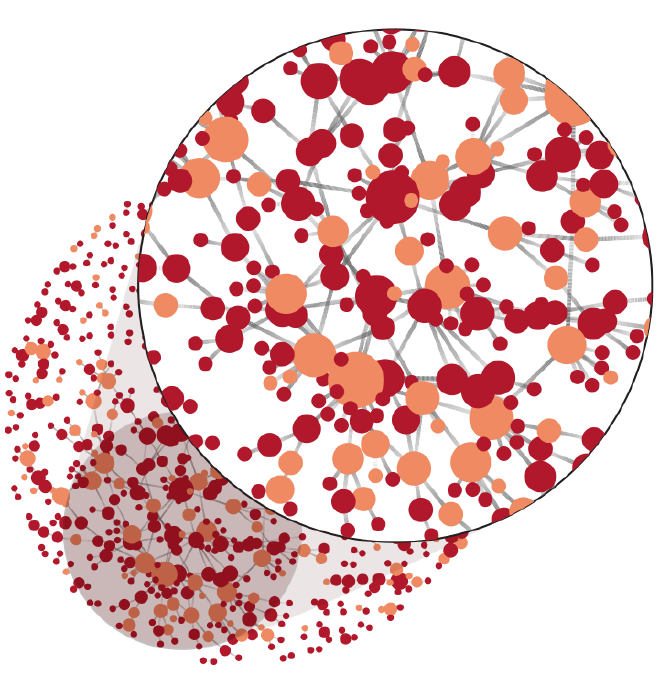
Fragile, yet resilient: Adaptive decline in a collaboration network of firms
|
[2021]
|
|
Schweitzer, Frank;
Casiraghi, Giona;
Tomasello, Mario Vincenzo;
Garcia, David
|
Frontiers in Applied Mathematics,
pages: 634006,
volume: 7
|
more» «less
|
Abstract
The dynamics of collaboration networks of firms follow a life-cycle of growth and decline. That does not imply they also become less resilient. Instead, declining collaboration networks may still have the ability to mitigate shocks from firms leaving, and to recover from these losses by adapting to new partners. To demonstrate this, we analyze 21.500 R&D collaborations of 14.500 firms in six different industrial sectors over 25 years. We calculate time-dependent probabilities of firms leaving the network and simulate drop-out cascades, to determine the expected dynamics of decline. We then show that deviations from these expectations result from the adaptivity of the network, which mitigates the decline. These deviations can be used as a measure of network resilience.


An agent-based model of multi-dimensional opinion dynamics and opinion alignment
|
[2020]
|
|
Schweighofer, Simon;
Garcia, David;
Schweitzer, Frank
|
Chaos,
volume: 30,
number: 9
|
more» «less
|
Abstract
It is known that individual opinions on different policy issues often align to a dominant ideological dimension (e.g. ``left'' vs. ``right'') and become increasingly polarized. We provide an agent-based model that reproduces these two stylized facts as emergent properties of an opinion dynamics in a multi-dimensional space of continuous opinions. The mechanisms for the change of agents' opinions in this multi-dimensional space are derived from cognitive dissonance theory and structural balance theory. We test assumptions from proximity voting and from directional voting regarding their ability to reproduce the expected emerging properties. We further study how the emotional involvement of agents, i.e. their individual resistance to change opinions, impacts the dynamics. We identify two regimes for the global and the individual alignment of opinions. If the affective involvement is high and shows a large variance across agents, this fosters the emergence of a dominant ideological dimension. Agents align their opinions along this dimension in opposite directions, i.e. create a state of polarization.

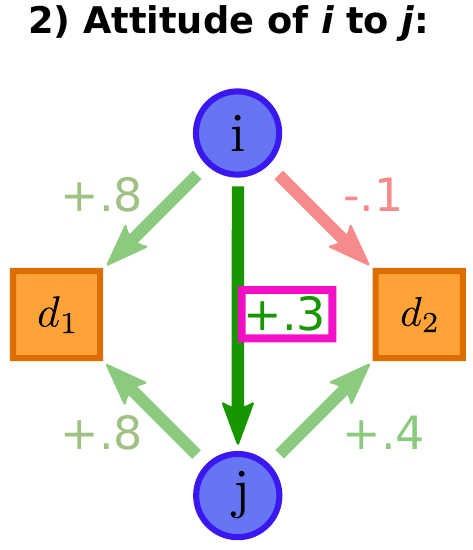
A Weighted Balance Model of Opinion Hyperpolarization
|
[2020]
|
|
Schweighofer, Simon;
Schweitzer, Frank;
Garcia, David
|
Journal of Artificial Societies and Social Simulation,
volume: 23,
number: 3
|
more» «less
|
Abstract
Polarization is threatening the stability of democratic societies. Until now, polarization research has focused on opinion extremeness, overlooking the correlation between different policy issues. We explain the emergence of hyperpolarization, i.e. the combination of extremeness and correlation between issues, by developing Weighted Balance Theory (WBT), a new theory of opinion formation. WBT extends Heider’s cognitive balance theory to encompass multiple weighted attitudes. We validate WBT on empirical data from the 2016 National Election Survey. Furthermore, we develop an opinion dynamics model based on WBT, which, for the first time, is able to generate hyperpolarization and to explain the link between affective and opinion polarization. In addition, our theory encompasses other phenomena of opinion dynamics, including mono-polarization and backfire effects.

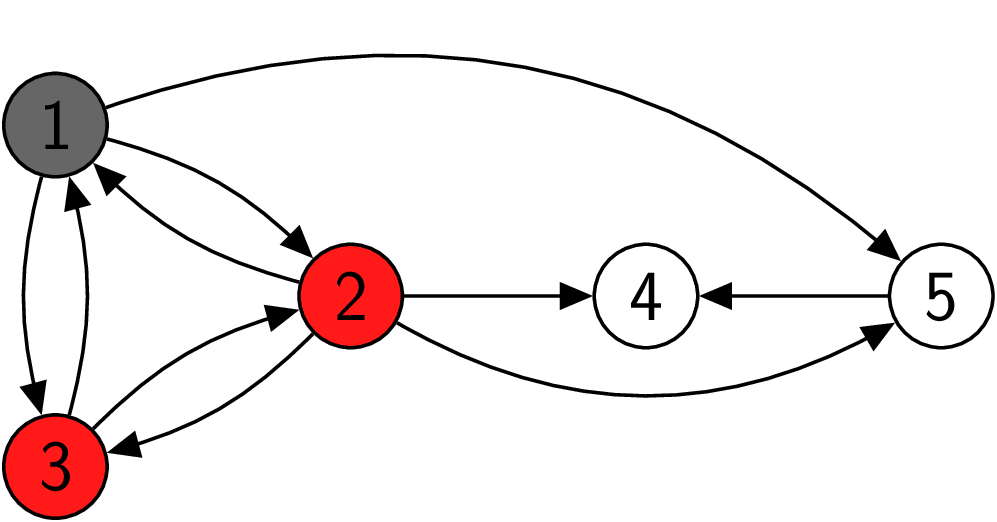
Modeling User Reputation in Online Social Networks: The Role of Costs, Benefits, and Reciprocity
|
[2020]
|
|
Schweitzer, Frank;
Mavrodiev, Pavlin;
Seufert, A. M.;
Garcia, David
|
Entropy,
pages: 1073,
volume: 22,
number: 10
|
more» «less
|
Abstract
We analyze an agent-based model to estimate how the costs and benefits of users in an online social network (OSN) impact the robustness of the OSN. Benefits are measured in terms of relative reputation that users receives from their followers. They can be increased by direct and indirect reciprocity in following each other, which leads to a core-periphery structure of the OSN. Costs relate to the effort to login, to maintain the profile, etc. and are assumed as constant for all users. The robustness of the OSN depends on the entry and exit of users over time. Intuitively, one would expect that higher costs lead to more users leaving and hence to a less robust OSN. We demonstrate that an optimal cost level exists, which maximizes both the performance of the OSN, measured by means of the long-term average benefit of its users, and the robustness of the OSN, measured by means of the life-time of the core of the OSN. Our mathematical and computational analyses unfold how changes in the cost level impact reciprocity and subsequently the core-periphery structure of the OSN, to explain the optimal cost level.

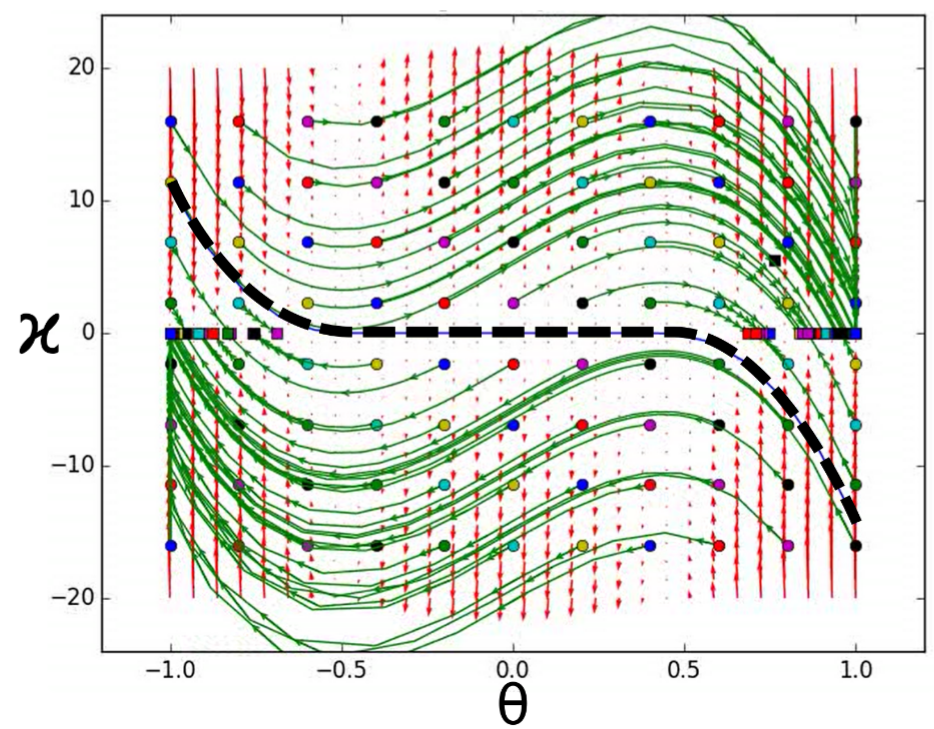
An Agent-Based Model of Opinion Polarization Driven by Emotions
|
[2020]
|
|
Schweitzer, Frank;
Krivachy, Tamas;
Garcia, David
|
Complexity,
volume: 2020
|
more» «less
|
Abstract
We provide an agent-based model to explain the emergence of collective opinions not based on feedback between different opinions, but based on emotional interactions between agents. The driving variable is the emotional state of agents, characterized by their valence, quantifying the emotion from unpleasant to pleasant, and their arousal, quantifying the degree of activity associated with the emotion. Both determine their emotional expression, from which collective emotional information is generated. This information feeds back on the dynamics of emotional states and individual opinions in a nonlinear manner. We derive the critical conditions for emotional interactions to obtain either consensus or polarization of opinions. Stochastic agent-based simulations and formal analyses of the model explain our results. Possible ways to validate the model are discussed.


Evaluative Patterns and Incentives in YouTube
|
[2017]
|
|
Abisheva, Adiya;
Garcia, David;
Schweitzer, Frank
|
Social Informatics
|
more» «less
|
Abstract
Users of social media are not only producers and consumers of online content, they also evaluate each other’s content. Some social media include the possibility to down vote or dislike the content posted by other users, posing the risk that users who receive dislikes might be more likely to become inactive, especially if the disliked content is about a person. We analyzed the data on more than 150,000 YouTube videos to understand how video impact and user incentives can be related to the possibility to dislike user content. We processed images related to videos to identify faces and quantify if evaluating content related to people is connected to disliking patterns. We found that videos with faces on their images tend to have less dislikes if they are posted by male users, but the effect is not present for female users. On the contrary, videos with faces and posted by female users attract more views and likes. Analyzing the probability of users to become inactive, we find that receiving dislikes is associated with users becoming inactive. This pattern is stronger when dislikes are given to videos with faces, showing that negative evaluations about people have a stronger association with user inactivity. Our results show that user evaluations in social media are a multi-faceted phenomenon that requires large-scale quantitative analyses, identifying under which conditions users disencourage other users from being active in social media.


Leaking privacy and shadow profiles in online social networks
|
[2017]
|
|
Garcia, David
|
Science Advances,
volume: 3,
number: 8
|
more» «less
|
Abstract
Social interaction and data integration in the digital society can affect the control that individuals have on their privacy. Social networking sites can access data from other services, including user contact lists where nonusers are listed too. Although most research on online privacy has focused on inference of personal information of users, this data integration poses the question of whether it is possible to predict personal information of nonusers. This article tests the shadow profile hypothesis, which postulates that the data given by the users of an online service predict personal information of nonusers. Using data from a disappeared social networking site, we perform a historical audit to evaluate whether personal data of nonusers could have been predicted with the personal data and contact lists shared by the users of the site. We analyze personal information of sexual orientation and relationship status, which follow regular mixing patterns in the social network. Going back in time over the growth of the network, we measure predictor performance as a function of network size and tendency of users to disclose their contact lists. This article presents robust evidence supporting the shadow profile hypothesis and reveals a multiplicative effect of network size and disclosure tendencies that accelerates the performance of predictors. These results call for new privacy paradigms that take into account the fact that individual privacy decisions do not happen in isolation and are mediated by the decisions of others.

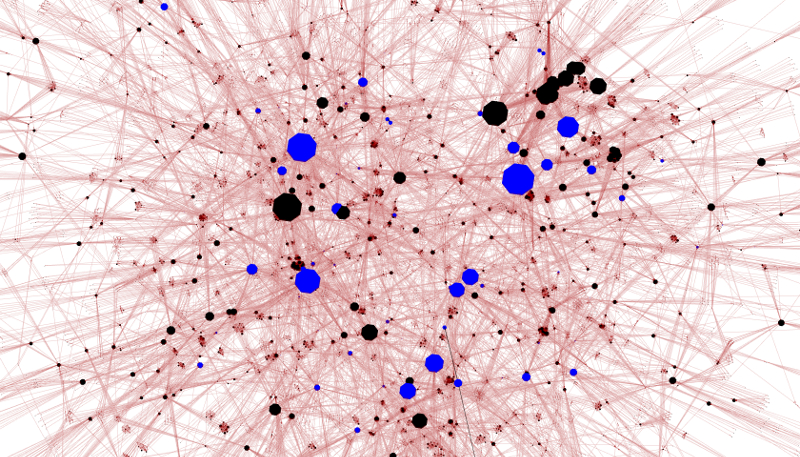
Quantifying the effect of editor-author relations on manuscript handling times
|
[2017]
|
|
Sarigol, Emre;
Garcia, David;
Scholtes, Ingo;
Schweitzer, Frank
|
Scientometrics,
pages: 609–631,
volume: 113,
number: 1
|
more» «less
|
Abstract
In this article we study to what extent the academic peer review pro-cess is influenced by social relations between the authors of a manuscript and the editor handling the manuscript. Taking the Open Access journal PlosOne as a case study, our analysis is based on a data set of more than 100,000 articles pub-lished between 2007 and 2015. Using available data on handling editor, submission and acceptance time of manuscripts, we study the question whether co-authorship relations between authors and the handling editor affect the manuscript handling time, i.e. the time taken between the submission and acceptance of a manuscript. Our analysis reveals (i) that editors handle papers co-authored by previous col-laborators significantly more often than expected at random, and (ii) that such prior co-author relations are significantly related to faster manuscript handling. Addressing the question whether these shorter manuscript handling times can be explained by the quality of publications, we study the number of citations and downloads which accepted papers eventually accumulate. Moreover, we consider the influence of additional (social) factors, such as the editor’s experience, the top-ical similarity between authors and editors, as well as reciprocal citation relations between authors and editors. Our findings show that, even when correcting for other factors like time, experience, and performance, prior co-authorship relations have a large and significant influence on manuscript handling times, speeding up the editorial decision on average by 19 days.

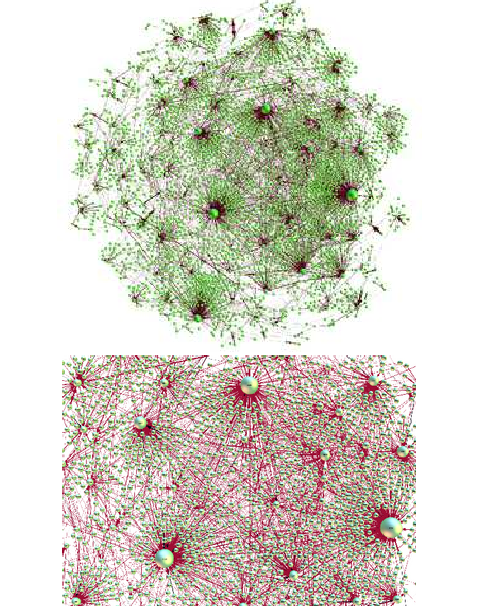
Agent-Based Simulations of Emotional Dialogs in the Online Social Network MySpace
|
[2017]
|
|
Tadic, Bosiljka;
Suvakov, Milovan;
Garcia, David;
Schweitzer, Frank
|
Cyberemotions: Collective Emotions in Cyberspace
|
more» «less
|
Abstract
Quantitative analysis of the empirical data from online social networks reveals the occurrence of group dynamics in which the user’s emotions are involved. Full understanding of the underlying mechanisms, however, remains a challenging task. Using agent-based computer simulations, in this work we study the dynamics of emotional communications in online social networks. The rules that guide how the agents interact, are motivated by actual online social systems. The realistic network structure and some key parameters are inferred from the empirical dataset compiled from the MySpace social network. An agent’s emotional state is characterized by two variables representing emotional arousal—reactivity to stimuli, and valence—attractiveness or averseness, by which a commonly known emotion can be identified. Elevated arousal triggers an agent’s action. In the simulations, each message is identified as carrying an agent’s emotion along a network link; an aggregated and continuously aging impact of these messages on the recipient agent is considered. Our results indicate that group behavior may arise from individual emotional actions of agents; the collective states appear, which are characterized by temporal correlations and predominantly positive emotions, in analogy to the empirical system; the driving signal—rate of the user stepping into the online world—has a profound effect on building the coherent behaviors that are observed in online social networks. Moreover, our simulations suggest that spreading patterns may differ for the emotions with the entirely different positive and negative emotional content.

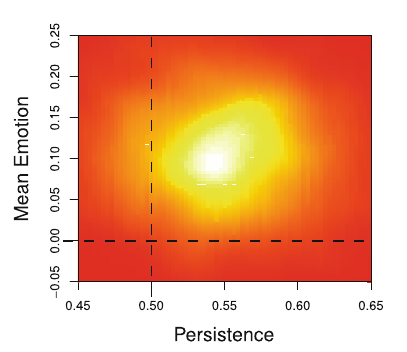
Zooming in: Studying Collective Emotions with Interactive Affective Systems
|
[2017]
|
|
Skowron, Marcin;
Rank, Stefan;
Garcia, David;
Hoyst, Janusz A.
|
Cyberemotions: Collective Emotions in Cyberspace
|
more» «less
|
Abstract
Computer-mediated communication between humans is at the center of the formation of collective emotions on the Internet. This chapter presents how interactive affective systems can be applied in order to study the role of emotion in online communication at the micro-scale, i.e. between individual users or between users and artificial communication partners. Specifically, we report on the effect of a simulated conversational partner’s affective profile, the use of fine-grained communication scenarios and social interaction context on changes in emotional states and expressed affect of users as well as their communication patterns. Based on these findings, we propose applications for such systems focused on supporting different e-communities with real-time information and discuss ethical implications of such systems.

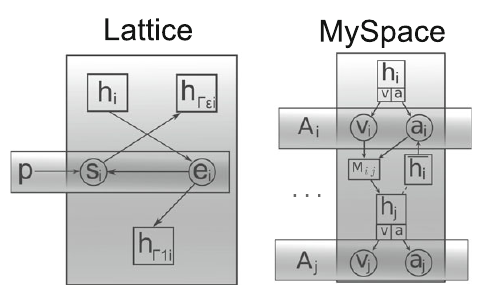
An Agent-Based Modeling Framework for Online Collective Emotions
|
[2017]
|
|
Garcia, David;
Garas, Antonios;
Schweitzer, Frank
|
Cyberemotions: Collective Emotions in Cyberspace
|
more» «less
|
Abstract
Online communication takes a variety of shapes in the different technological media that allow users interact with each other, with their friends, or with arbitrarily large groups. These serve as breeding grounds for collective emotions, in which large amounts of users share emotional states through time. We present our modeling framework for collective emotions in online communities, which can be adapted for the different kinds of online interaction present in the cyberspace. This framework allows the design of agent-based models, in which agents’ emotional states are represented according to psychological theories. This approach aims at a unification of modeling efforts, connecting the sentiment analysis of big data with psychological experiments, through tractable agent-based models. We illustrate the applications of this framework to different online communities, including product reviews, chatrooms, virtual realities, and social networking sites. We show how our model reproduces properties of collective emotions in the reviews of Amazon, and the group discussions of IRC channels. We comment the applications of this framework for data-driven simulation of emotions, and how we formulate testable hypotheses of emotion dynamics for future research on the field.

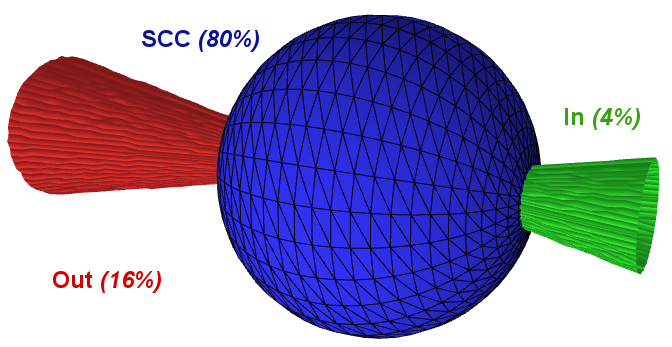
Understanding Popularity, Reputation, and Social Influence in the Twitter Society
|
[2017]
|
|
Garcia, David;
Mavrodiev, Pavlin;
Casati, Daniele;
Schweitzer, Frank
|
Policy & Internet
|
more» «less
|
Abstract
The pervasive presence of online media in our society has transferred a significant part of political deliberation to online forums and social networking sites. This article examines popularity, reputation, and social influence on Twitter using large-scale digital traces from 2009 to 2016. We process network information on more than 40 million users, calculating new global measures of reputation that build on the D-core decomposition and the bow-tie structure of the Twitter follower network. We integrate our measurements of popularity, reputation, and social influence to evaluate what keeps users active, what makes them more popular, and what determines their influence. We find that there is a range of values in which the risk of a user becoming inactive grows with popularity and reputation. Popularity in Twitter resembles a proportional growth process that is faster in its strongly connected component, and that can be accelerated by reputation when users are already popular. We find that social influence on Twitter is mainly related to popularity rather than reputation, but that this growth of influence with popularity is sublinear. The explanatory and predictive power of our method shows that global network metrics are better predictors of inactivity and social influence, calling for analyses that go beyond local metrics like the number of followers.


Anticipated Shocks in Online Activity: Response Functions of Attention and Word-of-mouth Processes
|
[2016]
|
|
Stommel, Sebastian;
Garcia, David;
Abisheva, Adiya;
Schweitzer, Frank
|
Proceedings of the 8th ACM Conference on Web Science
|
more» «less
|
Abstract
We test the existence of anticipated shocks in online activity, a class of collective dynamics that does not fit in the state of the art theory on social response functions. We use data on shares and views to Youtube videos, measuring their time series to classify them according to their dynamical class. We find evidence of the existence of anticipated shocks, and that they are more likely to appear in word-of-mouth interaction than in attention dynamics. Our results show that not all exogenous events in online activity are unexpected, calling for new models that differentiate social interaction and attention dynamics.

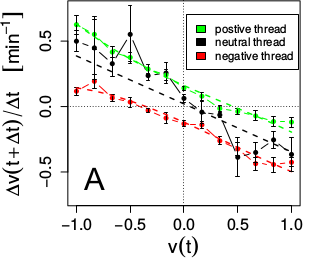
The Dynamics of Emotions in Online Interaction
|
[2016]
|
|
Garcia, David;
Kappas, Arvid;
Kuster, Dennis;
Schweitzer, Frank
|
Royal Society Open Science,
volume: 3,
number: 160059
|
more» «less
|
Abstract
We study the changes in emotional states induced by reading and participating in online discussions, empirically testing a computational model of online emotional interaction. Using principles of dynamical systems, we quantify changes in valence and arousal through subjective reports, as recorded in three independent studies including 207 participants (110 female). In the context of online discussions, the dynamics of valence and arousal are composed of two forces: an internal relaxation towards baseline values independent of the emotional charge of the discussion, and a driving force of emotional states that depends on the content of the discussion. The dynamics of valence show the existence of positive and negative tendencies, while arousal increases when reading emotional content regardless of its polarity. The tendency of participants to take part in the discussion increases with positive arousal. When participating in an online discussion, the content of participants' expression depends on their valence, and their arousal significantly decreases afterwards as a regulation mechanism. We illustrate how these results allow the design of agent-based models to reproduce and analyze emotions in online communities. Our work empirically validates the microdynamics of a model of online collective emotions, bridging online data analysis with research in the laboratory.

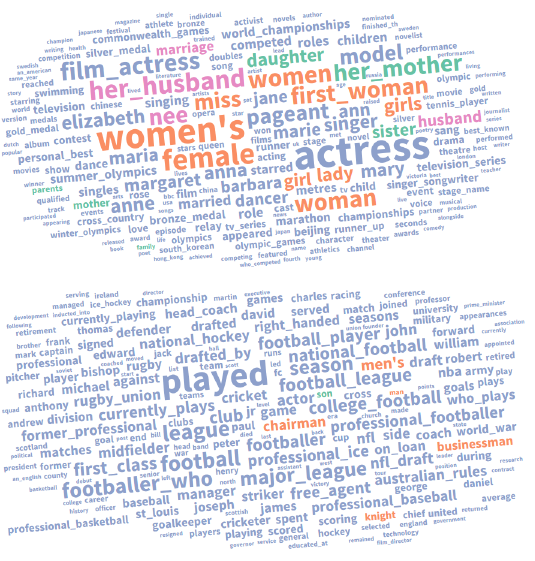
Women Through the Glass-Ceiling: Gender Asymmetries in Wikipedia
|
[2016]
|
|
Wagner, Claudia;
Graells - Garrido, Eduardo;
Garcia, David
|
EPJ Data Science,
volume: 5,
number: 5
|
more» «less
|
Abstract
Contributing to the writing of history has never been as easy as it is today thanks to Wikipedia, a community-created encyclopedia that aims to document the world's knowledge from a neutral point of view. Though everyone can participate it is well known that the editor community has a narrow diversity, with a majority of white male editors. While this participatory gender gap has been studied extensively in the literature, this work sets out to assess potential gender inequalities in Wikipedia articles along different dimensions: notability, topical focus, linguistic bias, structural properties and meta-data presentation. We find that (i) women in Wikipedia are more notable than men which we interpret as the outcome of a subtle glass ceiling effect; (ii) family-, gender-and relationship-related topics are more present in biographies about women; (iii) linguistic biases manifest in Wikipedia since abstract terms tend to be used to describe positive aspects in the biographies of men and negative aspects in the biographies of women; and (iv) there are structural differences in terms of meta-data and hyperlinks, which have consequences for information-seeking activities. While some differences are expected, due to historical and social contexts, other differences are attributable to Wikipedia editors. The implications of such differences are discussed, specially having Wikipedia contribution policies in mind. We hope that our work contributes to increase awareness about, first, gender issues in the content of Wikipedia, and second, the different levels on which gender biases can manifest on the Web.

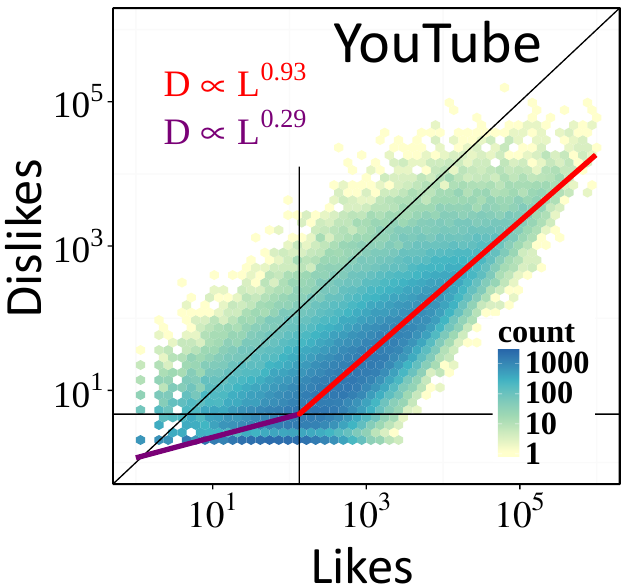
When the Filter Bubble Bursts: Collective Evaluation Dynamics in Online Communities
|
[2016]
|
|
Abisheva, Adiya;
Garcia, David;
Schweitzer, Frank
|
Proceedings of the 8th ACM Conference on Web Science
|
more» «less
|
Abstract
Through the analysis of collective upvotes and downvotes in multiple social media, we discover the bimodal regime of collective evaluations. When online content surpasses the local social context by reaching a threshold of collective attention, negativity grows faster with positivity, which serves as a trace of the burst of a filter bubble. To attain a global audience, we show that emotions expressed in online content has a significant effect and also play a key role in creating polarized opinions.
Remarks
Accepted as a poster.


The QWERTY Effect on the Web: How Typing Shapes the Meaning of Words in Online Human-Computer Interaction
|
[2016]
|
|
Garcia, David;
Strohmaier, Markus
|
Proceedings of the 25th International Conference on World Wide Web
|
more» «less
|
Abstract
The QWERTY effect postulates that the keyboard layout influences word meanings by linking positivity to the use of the right hand and negativity to the use of the left hand. For example, previous research has established that words with more right hand letters are rated more positively than words with more left hand letters by human subjects in small scale experiments. In this paper, we perform large scale investigations of the QWERTY effect on the web. Using data from eleven web platforms related to products, movies, books, and videos, we conduct observational tests whether a hand-meaning relationship can be found in text interpretations by web users. Furthermore, we investigate whether writing text on the web exhibits the QWERTY effect as well, by analyzing the relationship between the text of online reviews and their star ratings in four additional datasets. Overall, we find robust evidence for the QWERTY effect both at the point of text interpretation (decoding) and at the point of text creation (encoding). We also find under which conditions the effect might not hold. Our findings have implications for any algorithmic method aiming to evaluate the meaning of words on the web, including for example semantic or sentiment analysis, and show the existence of "dactilar onomatopoeias" that shape the dynamics of word-meaning associations. To the best of our knowledge, this is the first work to reveal the extent to which the QWERTY effect exists in large scale human-computer interaction on the web.

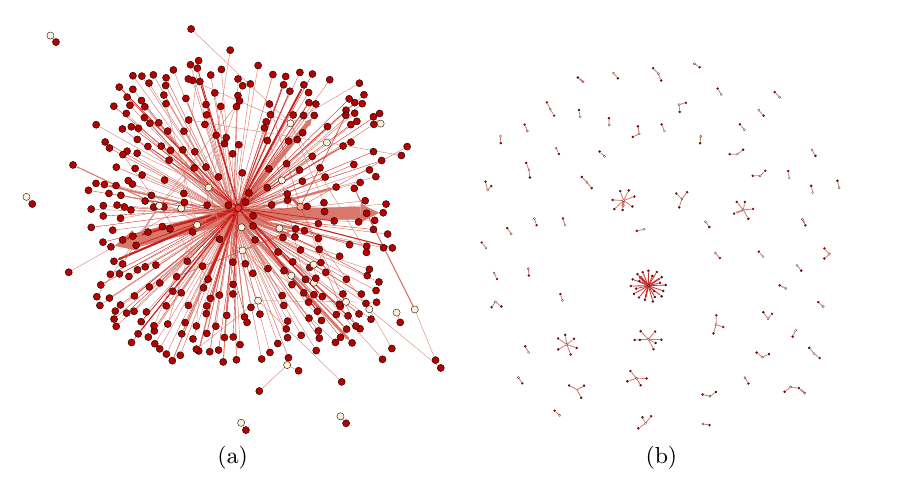
Emotions, Demographics and Sociability in Twitter Interactions
|
[2016]
|
|
Lerman, Kristina;
Arora, Megha;
Gallegos, Luciano;
Kumaraguru, Ponnurangam;
Garcia, David
|
nternational Conference in Web and Social Media (ICWSM)
|
more» «less
|
Abstract
The social connections, or ties, individuals create affect their life outcomes, for example, by providing novel information that leads to new jobs or career opportunities. A host of socioeconomic and cognitive factors are believed to affect social interactions, but few of these factors have been empirically validated. In this research work, we extracted a large corpus of data from a popular social media platform that consists of geo-referenced messages, or tweets, posted from a major US metropolitan area. We linked these tweets to US Census data through their locations. This allowed us to measure emotions expressed in tweets posted from a specific area, and also use that area's socioeconomic and demographic characteristics in the analysis. We extracted the structure of social interactions from the people mentioned in tweets from that area. We find that at an aggregate level, areas where social media users engage in stronger, less diverse online social interactions are those where they express more negative emotions, like sadness and anger. With respect to demographics, these areas have larger numbers of Hispanic residents, lower mean household income, and lower education levels. Conversely, areas with weaker, more diverse online interactions are associated with happier, more positive feelings and also have better educated, younger and higher-earning residents. Our work highlights the value of linking social media data to traditional data sources, such as US Census, to drive novel analysis of online behavior.


Geography of Emotion: Where in a City are People Happier?
|
[2015]
|
|
Gallegos, Luciano;
Lerman, Kristina;
Huang, Arthur;
Garcia, David
|
Proceedings of the 25th international World Wide Web conference companion
|
more» «less
|
Abstract
Location-sharing services were built upon people's desire to share their activities and locations with others. By "checking-in" to a place, such as a restaurant, a park, gym, or train station, people disclose where they are, thereby providing valuable information about land use and utilization of services in urban areas. This information may, in turn, be used to design smarter, happier, more equitable cities. We use data from Foursquare location-sharing service to identify areas within a major US metropolitan area with many check-ins, i.e., areas that people like to use. We then use data from the Twitter microblogging platform to analyze the properties of these areas. Specifically, we have extracted a large corpus of geo-tagged messages, called tweets, from a major metropolitan area and linked them US Census data through their locations. This allows us to measure the sentiment expressed in tweets that are posted from a specific area, and also use that area's demographic properties in analysis. Our results reveal that areas with many check-ins are different from other areas within the metropolitan region. In particular, these areas have happier tweets, which also encourage people from other areas to commute longer distances to these places. These findings shed light on human mobility patterns, as well as how physical environment influences human emotions.

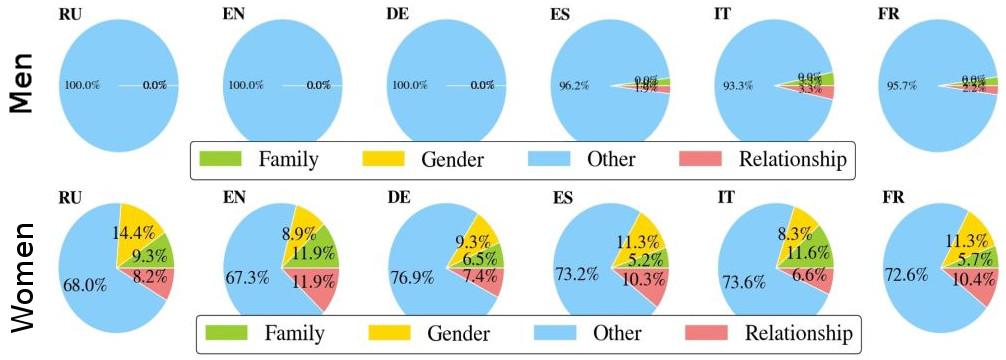
It's a Man's Wikipedia? Assessing Gender Inequality in an Online Encyclopedia
|
[2015]
|
|
Wagner, Claudia;
Garcia, David;
Jadidi, Mohsen;
Strohmaier, Markus
|
In Proceedings of the 9th International AAAI Conference on Weblogs and Social Media,
pages: 454-463
|
more» «less
|
Abstract
Wikipedia is a community-created encyclopedia that contains information about notable people from different countries, epochs and disciplines and aims to document the world’s knowledge from a neutral point of view. However, the narrow diversity of the Wikipedia editor community has the potential to introduce systemic biases such as gender biases into the content of Wikipedia. In this paper we aim to tackle a sub problem of this larger challenge by presenting and applying a computational method for assessing gender bias on Wikipedia along multiple dimensions. We find that while women on Wikipedia are covered and featured well in many Wikipedia language editions, the way women are portrayed starkly differs from the way men are portrayed. We hope our work contributes to increasing awareness about gender biases online, and in particular to raising attention to the different levels in which gender biases can manifest themselves on the web.
Becoming popular: Interpersonal emotion regulation predicts relationship formation in real life social networks
|
[2015]
|
|
Niven, Karen;
Garcia, David;
Lowe, Ilmo Van Der;
Holman, David;
Mansell, Warren
|
Frontiers in Psychology,
volume: 6,
number: 1452
|
more» «less
|
Abstract
Building relationships is crucial for satisfaction and success, especially when entering new social contexts. In the present paper, we investigate whether attempting to improve others’ feelings helps people to make connections in new networks. In Study 1, a social network study following new networks of people for a twelve-week period indicated that use of interpersonal emotion regulation (IER) strategies predicted growth in popularity, as indicated by other network members’ reports of spending time with the person, in work and non-work interactions. In Study 2, linguistic analysis of the tweets from over 8000 Twitter users from formation of their accounts revealed that use of IER predicted greater popularity in terms of the number of followers gained. However, not all types of IER had positive effects. Behavioral IER strategies (which use behavior to reassure or comfort in order to regulate affect) were associated with greater popularity, while cognitive strategies (which change a person’s thoughts about his or her situation or feelings in order to regulate affect) were negatively associated with popularity. Our findings have implications for our understanding of how new relationships are formed, highlighting the important the role played by intentional emotion regulatory processes.

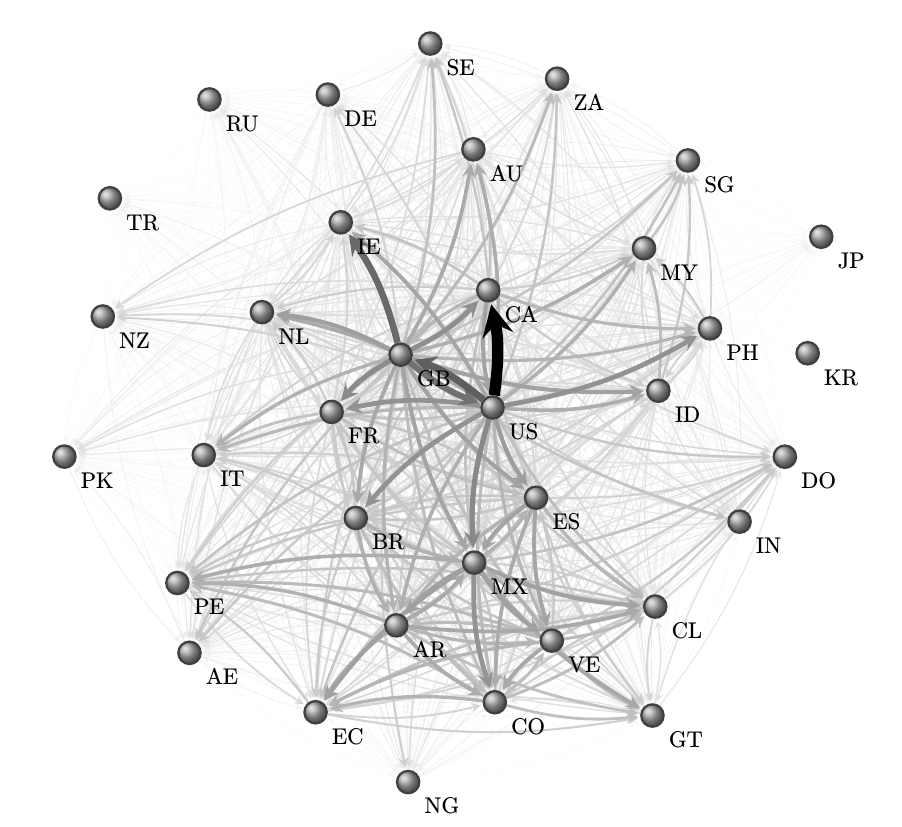
Quantifying the Economic and Cultural Biases of Social Media through Trending Topics
|
[2015]
|
|
Carrascosa, Juan Miguel;
Cuevas, Ruben;
Gonzalez, Roberto;
Azcorra, Arturo;
Garcia, David
|
PLOS ONE,
pages: e0134407,
volume: 10,
number: 7
|
more» «less
|
Abstract
Online social media has recently irrupted as the last major venue for the propagation of news and cultural content, competing with traditional mass media and allowing citizens to access new sources of information. In this paper, we study collectively filtered news and popular content in Twitter, known as Trending Topics (TTs), to quantify the extent to which they show similar biases known for mass media. We use two datasets collected in 2013 and 2014, including more than 300.000 TTs from 62 countries. The existing patterns of leader-follower relationships among countries reveal systemic biases known for mass media: Countries concentrate their attention to small groups of other countries, generating a pattern of centralization in which TTs follow the gradient of wealth across countries. At the same time, we find subjective biases within language communities linked to the cultural similarity of countries, in which countries with closer cultures and shared languages tend to follow each other’s TTs. Moreover, using a novel methodology based on the Google News service, we study the influence of mass media in TTs for four countries. We find that roughly half of the TTs in Twitter overlap with news reported by mass media, and that the rest of TTs are more likely to spread internationally within Twitter. Our results confirm that online social media have the power to independently spread content beyond mass media, but at the same time social media content follows economic incentives and is subject to cultural factors and language barriers.

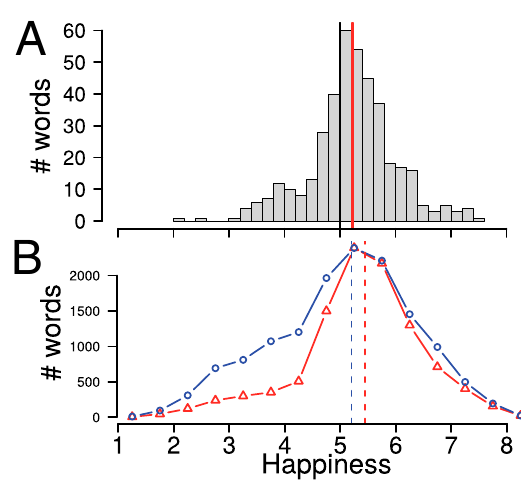
The language-dependent relationship between word happiness and frequency
|
[2015]
|
|
Garcia, David;
Garas, Antonios;
Schweitzer, Frank
|
Proceedings of the National Academy of Sciences,
pages: 201502909,
volume: 112,
number: 23
|
more» «less
|
Abstract
Dodds et al. (1) present a universal positivity bias—in 10 human languages—that they claim is independent of word frequency. This result contradicts previous findings (2, 3) in which a relationship between word happiness and frequency is reported for a variety of languages and large-scale datasets. To better understand this contradiction, we reanalyze the labMT (language assessment by Mechanical Turk) data produced in Dodds et al. (1) against a larger reference lexicon (3). Our reanalysis shows that the data used in Dodds et al. (1) does not support their claims.

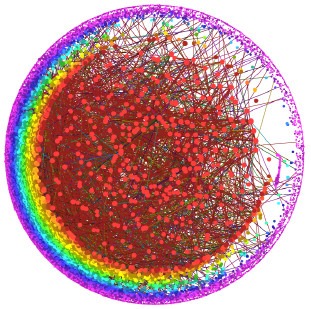
Emotions and Activity Profiles of Influential Users in Product Reviews Communities
|
[2015]
|
|
Tanase, Dorian;
Garcia, David;
Garas, Antonios;
Schweitzer, Frank
|
Frontiers in Physics,
volume: 3,
number: 87
|
more» «less
|
Abstract
Viral marketing seeks to maximize the spread of a campaign
through an online social network, often targeting influential nodes with high
centrality. In this article, we analyze behavioral aspects of influential
users in trust-based product reviews communities, quantifying emotional
expression, helpfulness, and user activity level. We focus on two independent
product review communities, Dooyoo and Epinions, in which
users can write product reviews and define trust links to filter product
recommendations. Following the patterns of social contagion processes, we
measure user social influence by means of the k-shell decomposition of trust
networks. For each of these users, we apply sentiment analysis to extract
their extent of positive, negative, and neutral emotional expression. In
addition, we quantify the level of feedback they received in their reviews,
the length of their contributions, and their level of activity over their
lifetime in the community. We find that users of both communities exhibit a
large heterogeneity of social influence, and that helpfulness votes and age
are significantly better predictors of the influence of an individual than
sentiment. The most active of the analyzed communities shows a particular
structure, in which the inner core of users is qualitatively different from
its periphery in terms of a stronger positive and negative emotional
expression. These results suggest that both objective and subjective aspects
of reviews are relevant to the communication of subjective experience.
Pro-Anorexia and Anti-Pro-Anorexia Videos on YouTube: Sentiment Analysis of User Responses
|
[2015]
|
|
Oksanen, Atte;
Garcia, David;
Sirola, Anu;
Näsi, Matti;
Kaakinen, Markus;
Keipi, Teo;
Räsänen, Pekka
|
Journal of Medical Internet Research,
pages: e2560,
volume: 11,
number: 17
|
more» «less
|
Abstract
Background: Pro-anorexia communities exist online and encourage harmful weight loss and weight control practices, often through emotional content that enforces social ties within these communities. User-generated responses to videos that directly oppose pro-anorexia communities have not yet been researched in depth.
Objective: The aim was to study emotional reactions to pro-anorexia and anti-pro-anorexia online content on YouTube using sentiment analysis.
Methods: Using the 50 most popular YouTube pro-anorexia and anti-pro-anorexia user channels as a starting point, we gathered data on users, their videos, and their commentators. A total of 395 anorexia videos and 12,161 comments were analyzed using positive and negative sentiments and ratings submitted by the viewers of the videos. The emotional information was automatically extracted with an automatic sentiment detection tool whose reliability was tested with human coders. Ordinary least squares regression models were used to estimate the strength of sentiments. The models controlled for the number of video views and comments, number of months the video had been on YouTube, duration of the video, uploader’s activity as a video commentator, and uploader’s physical location by country.
Results: The 395 videos had more than 6 million views and comments by almost 8000 users. Anti-pro-anorexia video comments expressed more positive sentiments on a scale of 1 to 5 (adjusted prediction [AP] 2.15, 95% CI 2.11-2.19) than did those of pro-anorexia videos (AP 2.02, 95% CI 1.98-2.06). Anti-pro-anorexia videos also received more likes (AP 181.02, 95% CI 155.19-206.85) than pro-anorexia videos (AP 31.22, 95% CI 31.22-37.81). Negative sentiments and video dislikes were equally distributed in responses to both pro-anorexia and anti-pro-anorexia videos.
Conclusions: Despite pro-anorexia content being widespread on YouTube, videos promoting help for anorexia and opposing the pro-anorexia community were more popular, gaining more positive feedback and comments than pro-anorexia videos. Thus, the anti-pro-anorexia content provided a user-generated counterforce against pro-anorexia content on YouTube. Professionals working with young people should be aware of the social media dynamics and versatility of user-generated eating disorder content online.

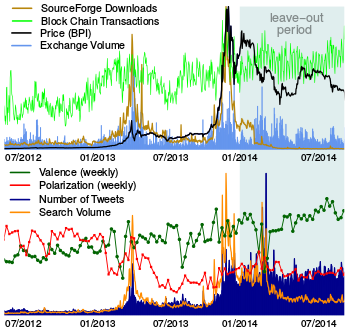
Social signals and algorithmic trading of Bitcoin
|
[2015]
|
|
Garcia, David;
Schweitzer, Frank
|
Royal Society Open Science,
volume: 2,
number: 150288
|
more» «less
|
Abstract
The availability of data on digital traces is growing to unprecedented sizes, but inferring actionable knowledge from large-scale data is far from being trivial. This is especially important for computational finance, where digital traces of human behaviour offer a great potential to drive trading strategies. We contribute to this by providing a consistent approach that integrates various datasources in the design of algorithmic traders. This allows us to derive insights into the principles behind the profitability of our trading strategies. We illustrate our approach through the analysis of Bitcoin, a cryptocurrency known for its large price fluctuations. In our analysis, we include economic signals of volume and price of exchange for USD, adoption of the Bitcoin technology and transaction volume of Bitcoin. We add social signals related to information search, word of mouth volume, emotional valence and opinion polarization as expressed in tweets related to Bitcoin for more than 3 years. Our analysis reveals that increases in opinion polarization and exchange volume precede rising Bitcoin prices, and that emotional valence precedes opinion polarization and rising exchange volumes. We apply these insights to design algorithmic trading strategies for Bitcoin, reaching very high profits in less than a year. We verify this high profitability with robust statistical methods that take into account risk and trading costs, confirming the long-standing hypothesis that trading-based social media sentiment has the potential to yield positive returns on investment.
Remarks
Online visualization at www.sg.ethz.ch/btc


Ideological and Temporal Components of Network Polarization in Online Political Participatory Media
|
[2015]
|
|
Garcia, David;
Abisheva, Adiya;
Schweighofer, Simon;
Serdult, Uwe;
Schweitzer, Frank
|
Policy and Internet,
pages: 46-79,
volume: 7,
number: 1
|
more» «less
|
Abstract
Political polarization is traditionally analyzed through the ideological stances of groups and parties, but it also has a behavioral component that manifests in the interactions between individuals. We present an empirical analysis of the digital traces of politicians in politnetz.ch, a Swiss online platform focused on political activity, in which politicians interact by creating support links, comments, and likes. We analyze network polarization as the level of intra-party cohesion with respect to inter-party connectivity, finding that supports show a very strongly polarized structure with respect to party alignment. The analysis of this multiplex network shows that each layer of interaction contains relevant information, where comment groups follow topics related to Swiss politics. Our analysis reveals that polarization in the layer of likes evolves in time, increasing close to the federal elections of 2011. Furthermore, we analyze the internal social network of each party through metrics related to hierarchical structures, information efficiency, and social resilience. Our results suggest that the online social structure of a party is related to its ideology, and reveal that the degree of connectivity across two parties increases when they are close in the ideological space of a multi-party system.


Sentiment cascades in the 15M movement
|
[2015]
|
|
Alvarez, Raquel;
Garcia, David;
Moreno, Yamir;
Schweitzer, Frank
|
EPJ Data Science,
volume: 4,
number: 6
|
more» «less
|
Abstract
Recent grassroots movements have suggested that online social networks might play a key role in their organization, as adherents have a fast, many-to-many, communication channel to help coordinate their mobilization. The structure and dynamics of the networks constructed from the digital traces of protesters have been analyzed to some extent recently. However, less effort has been devoted to the analysis of the semantic content of messages exchanged during the protest. Using the data obtained from a microblogging service during the brewing and active phases of the 15M movement in Spain, we perform the first large scale test of theories on collective emotions and social interaction in collective actions. Our findings show that activity and information cascades in the movement are larger in the presence of negative collective emotions and when users express themselves in terms related to social content. At the level of individual participants, our results show that their social integration in the movement, as measured through social network metrics, increases with their level of engagement and of expression of negativity. Our findings show that non-rational factors play a role in the formation and activity of social movements through online media, having important consequences for viral spreading.

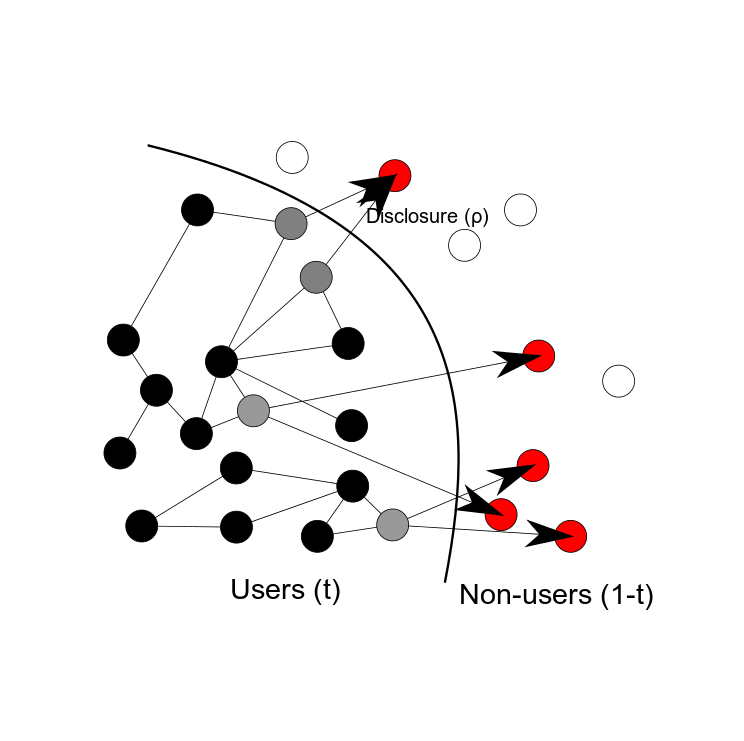
Online Privacy as a Collective Phenomenon
|
[2014]
|
|
Sarigol, Emre;
Garcia, David;
Schweitzer, Frank
|
In Proceedings of the 2nd Conference on Online Social Networks 2014,
pages: 95-105
|
more» «less
|
Abstract
The problem of online privacy is often reduced to individual decisions to hide or reveal personal information in online social networks (OSNs). However, with the increasing use of OSNs, it becomes more important to understand the role of the social network in disclosing personal information that a user has not revealed voluntarily: How much of our private information do our friends disclose about us, and how much of our privacy is lost simply because of online social interaction? Without strong technical effort, an OSN may be able to exploit the assortativity of human private features, this way constructing shadow profiles with information that users chose not to share. Furthermore, because many users share their phone and email contact lists, this allows an OSN to create full shadow profiles for people who do not even have an account for this OSN. We empirically test the feasibility of constructing shadow profiles of sexual orientation for users and non-users, using data from more than 3 Million accounts of a single OSN. We quantify a lower bound for the predictive power derived from the social network of a user, to demonstrate how the predictability of sexual orientation increases with the size of this network and the tendency to share personal information. This allows us to define a privacy leak factor that links individual privacy loss with the decision of other individuals to disclose information. Our statistical analysis reveals that some individuals are at a higher risk of privacy loss, as prediction accuracy increases for users with a larger and more homogeneous first-and second-order neighborhood of their social network. While we do not provide evidence that shadow profiles exist at all, our results show that disclosing of private information is not restricted to an individual choice, but becomes a collective decision that has implications for policy and privacy regulation.

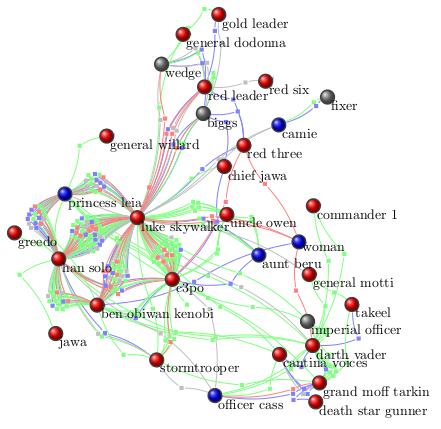
Gender Asymmetries in Reality and Fiction : The Bechdel Test of Social Media
|
[2014]
|
|
Garcia, David;
Weber, Ingmar;
Garimella, Rama Venkata Kiran
|
Proceedings of the International AAAI Conference on Weblogs and Social Media
|
more» «less
|
Abstract
The subjective nature of gender inequality motivates the analysis and comparison of data from real and fictional human interaction. We present a computational extension of the Bechdel test: A popular tool to assess if a movie contains a male gender bias, by looking for two female characters who discuss about something besides a man. We provide the tools to quantify Bechdel scores for both genders, and we measure them in movie scripts and large datasets of dialogues between users of MySpace and Twitter. Comparing movies and users of social media, we find that movies and Twitter conversations have a consistent male bias, which does not appear when analyzing MySpace. Furthermore, the narrative of Twitter is closer to the movies that do not pass the Bechdel test than to
those that pass it.
We link the properties of movies and the users that share trailers of those movies. Our analysis reveals some particularities of movies that pass the Bechdel test: Their trailers are less popular, female users are more likely to share them than male users, and users that share them tend to interact less with male users. Based on our datasets, we define gender independence measurements to analyze the gender biases of a society, as manifested through digital traces of online behavior. Using the profile information of Twitter users, we find larger gender independence for urban users in comparison to rural ones. Additionally, the asymmetry between genders is larger for parents and lower for students. Gender asymmetry varies across US states, increasing with higher average income and latitude. This points to the relation between gender inequality and social, economical, and cultural factors of a society, and how gender roles exist in both fictional narratives and public
online dialogues.

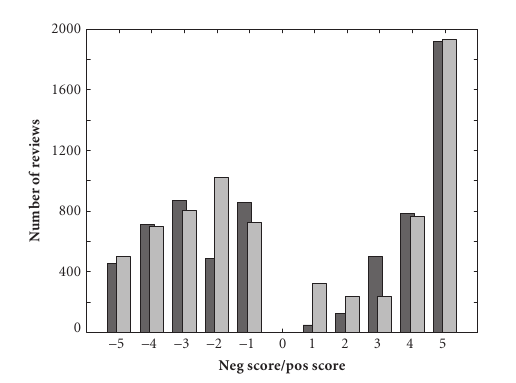
Modeling collective emotions in online social systems
|
[2014]
|
|
Garcia, David;
Garas, Antonios;
Schweitzer, Frank
|
Collective Emotions
|
more» «less
|
Abstract
Every day, millions of Internet users leave online traces that are publicly accessible. Data
about forum comments, video downloads, or product reviews provide a valuable insight
into human online behavior. The retrieval of datasets of unprecedented size may eventu-
ally also allow testing of hypotheses or validation of theories that have been developed in
the social sciences, for example, about preferences, social influence (Lorenz, 2009; Onnela
& Reed-Tsochas, 2010), trust, and cooperation (Walter, Battiston, Yildirim, & Schweitzer,
2011). This recent scientific development has led to the emerging field of computational
social science (Lazer et al., 2009) which combines methods and tools from different tech-
nical and social disciplines. Also, psychology can benefit from this development by get-
ting access to data without designing expensive experimental setups of limited size. For
example, the analysis of Twitter messages allows studying the influence of the circadian
cycles on human mood (Golder & Macy, 2011), and sentiment analysis of large-scale
datasets reveals patterns of emotional expression predicted by earlier theories (Garcia,
Garas, & Schweitzer, 2012).

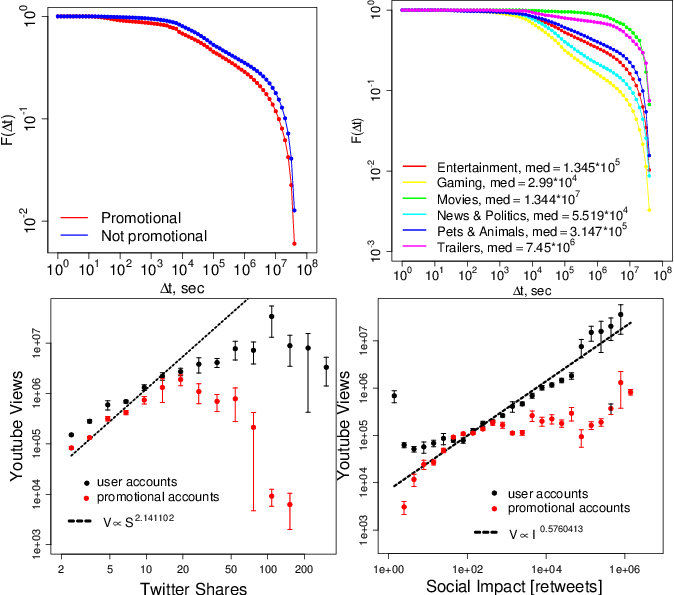
Who Watches ( and Shares ) What on YouTube ? And When ? Using Twitter to Understand YouTube Viewership
|
[2014]
|
|
Abisheva, Adiya;
Garimella, Venkata Rama Kiran;
Garcia, David;
Weber, Ingmar
|
WSDM 2014
|
more» «less
|
Abstract
We combine user-centric Twitter data with video-centric YouTube data to analyze who watches and shares what on YouTube. Combination of two data sets, with 87k Twitter users, 5.6mln YouTube videos and 15mln video sharing events, allows rich analysis going beyond what could be obtained with either of the two data sets individually. For Twitter, we generate user features relating to activity, interests and demographics. For YouTube, we obtain video features for topic, popularity and polarization. These two feature sets are combined through sharing events for YouTube URLs on Twitter. This combination is done both in a user-, a video-and a sharing-event-centric manner. For the user-centric analysis, we show how Twitter user features correlate both with YouTube features and with sharing-related features. As two examples, we show urban users are quicker to share than rural users and for some notions of "influence" influential users on Twitter share videos with a higher number of views. For the video-centric analysis, we find a superlinear relation between initial Twitter shares and the final amounts of views, showing the correlated behavior of Twitter. On user impact, we find the total amount of followers of users that shared the video in the first week does not affect its final popularity. However, aggregated user retweet rates serve as a better predictor for YouTube video popularity. For the sharing-centric analysis, we reveal existence of correlated behavior concerning the time between video creation and sharing within certain timescales, showing the time onset for a coherent response, and the time limit after which collective responses are extremely unlikely. We show that response times depend on video category, revealing that Twitter sharing of a video is highly dependent on its content. To the best of our knowledge this is the first large-scale study combining YouTube and Twitter data.

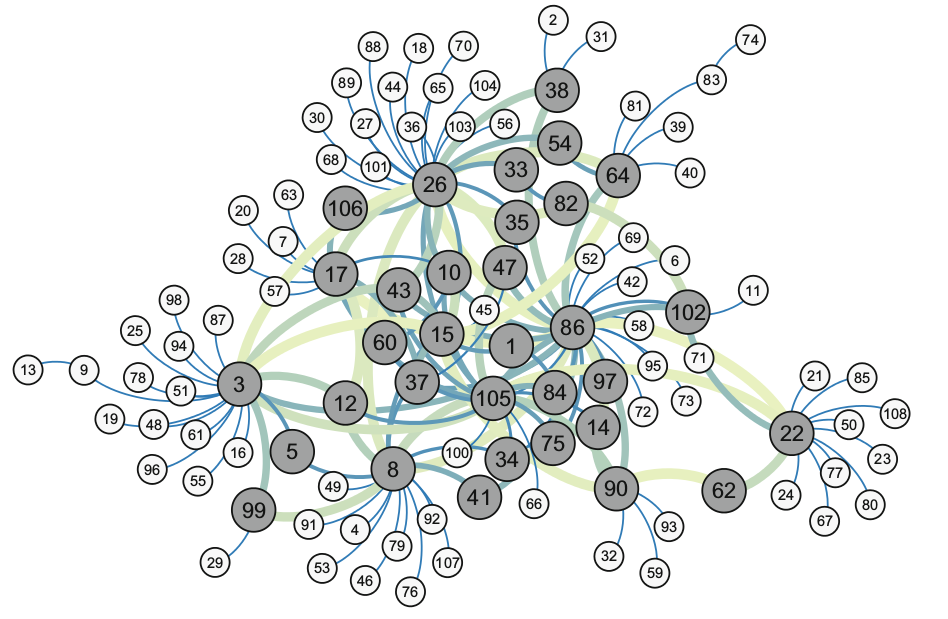
Social Network Analysis in the Enterprise: Challenges and Opportunities
|
[2014]
|
|
Burger, Valentin;
Hock, David;
Scholtes, Ingo;
Hofeld, Tobias;
Garcia, David;
Seufert, Michael
|
Socioinformatics-The Social Impact of Interactions between Humans and IT
|
more» «less
|
Abstract
Enterprise social software tools are increasingly being used to support the communication and collaboration between employees, as well as to facilitate the collaborative organisation of information and knowledge within companies. Not only do these tools help to develop and maintain an efficient social organisation, they also produce massive amounts of fine-grained data on collaborations, communication and other forms of social relationships within an enterprise. In this chapter, we argue that the availability of these data provides unique opportunities to monitor and analyse social structures and their impact on the success and performance of individuals, teams, communities and organisations. We further review methods from the planning, design and optimisation of telecommunication networks and discuss challenges arising when wanting to apply them to optimise the structure of enterprise social networks.

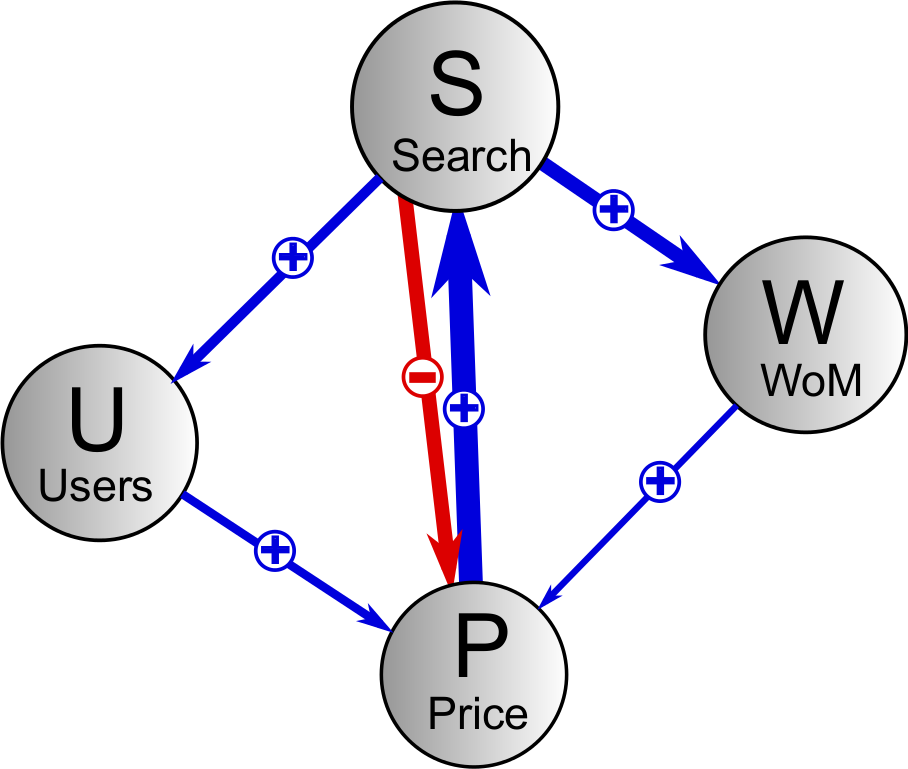
The digital traces of bubbles: Feedback cycles between socio-economic signals in the Bitcoin economy
|
[2014]
|
|
Garcia, David;
Tessone, Claudio Juan;
Mavrodiev, Pavlin;
Perony, Nicolas
|
Journal of the Royal Society Interface,
pages: 20140623,
volume: 11,
number: 99
|
more» «less
|
Abstract
What is the role of social interactions in the creation of price bubbles? Answering this question requires obtaining collective behavioural traces generated by the activity of a large number of actors. Digital currencies offer a unique possibility to measure socio-economic signals from such digital traces. Here, we focus on Bitcoin, the most popular cryptocurrency. Bitcoin has experienced periods of rapid increase in exchange rates (price) followed by sharp decline; we hypothesize that these fluctuations are largely driven by the interplay between different social phenomena. We thus quantify four socio-economic signals about Bitcoin from large datasets: price on online exchanges, volume of word-of-mouth communication in online social media, volume of information search and user base growth. By using vector autoregression, we identify two positive feedback loops that lead to price bubbles in the absence of exogenous stimuli: one driven by word of mouth, and the other by new Bitcoin adopters. We also observe that spikes in information search, presumably linked to external events, precede drastic price declines. Understanding the interplay between the socio-economic signals we measured can lead to applications beyond cryptocurrencies to other phenomena that leave digital footprints, such as online social network usage.
Resilience in Enterprise Social Networks
|
[2013]
|
|
Burger, Valentin;
Hofeld, Tobias;
Garcia, David;
Seufert, Michael;
Scholtes, Ingo;
Hock, David
|
In Proceedings of Informatik 2013, 43. Jahrestagung der Gesellschaft für Informatik e.V. (GI), Informatik angepasst an Mensch, Organisation und Umwelt, 16.-20. September 2013, Koblenz
|
more» «less
|
Abstract
The goal of human resource management is to ensure an effective company environment. Crucial for a good corporate culture is a comfortable atmosphere and positive social relationships between the employees. The interactions of the people and groups working in the company define their relationships and are reflected in the company's social network. Projections of such networks are Enterprise Social Networks which are more and more integrated in companies. These social networks can be a powerful tool to analyse the structure of a company and indicate potential problems. This extended abstract poses research questions to identify and quantify mechanisms that have an impact on the social network of a company to ensure resilience. To address these questions we make assumptions based on real-world observations for a subsequent model.

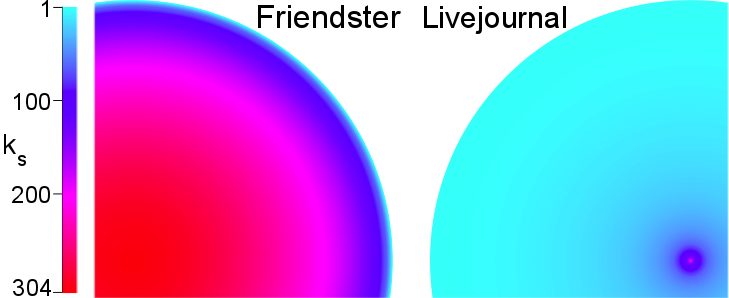
Social resilience in online communities: The autopsy of Friendster
|
[2013]
|
|
Garcia, David;
Mavrodiev, Pavlin;
Schweitzer, Frank
|
Proceedings of the 1st ACM Conference in Online Social Networks (COSN'13),
pages: 39-50
|
more» «less
|
Abstract
We empirically analyze five online communities: Friendster, Livejournal, Facebook, Orkut, Myspace, to identify causes for the decline of social networks. We define social resilience as the ability of a community to withstand changes. We do not argue about the cause of such changes, but concentrate on their impact. Changes may cause users to leave, which may trigger further leaves of others who lost connection to their friends. This may lead to cascades of users leaving. A social network is said to be resilient if the size of such cascades can be limited. To quantify resilience, we use the k-core analysis, to identify subsets of the network in which all users have at least k friends. These connections generate benefits (b) for each user, which have to outweigh the costs (c) of being a member of the network. If this difference is not positive, users leave. After all cascades, the remaining network is the k-core of the original network determined by the cost-to-benefit c/b ratio. By analysing the cumulative distribution of k-cores we are able to calculate the number of users remaining in each community. This allows us to infer the impact of the c/b ratio on the resilience of these online communities. We find that the different online communities have different k-core distributions. Consequently, similar changes in the c/b ratio have a different impact on the amount of active users. As a case study, we focus on the evolution of Friendster. We identify time periods when new users entering the network observed an insufficient c/b ratio. This measure can be seen as a precursor of the later collapse of the community. Our analysis can be applied to estimate the impact of changes in the user interface, which may temporarily increase the c/b ratio, thus posing a threat for the community to shrink, or even to collapse.

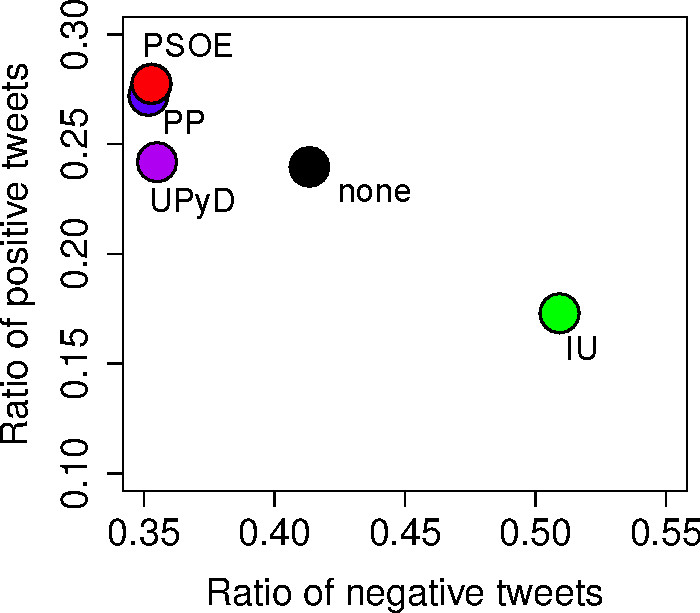
Political alignment and emotional expression in Spanish Tweets
|
[2013]
|
|
Garcia, David;
Thelwall, Mike
|
Workshop on Sentiment Analysis at SEPLN
|
more» «less
|
Abstract
We present a study political discourse and emotional expression through
a dataset of Spanish tweets. We analyze the political position of four major parties
through their Twitter activity, revealing that Twitter political discourse depends
on subjective perception, and resembles the political space of Spain. We propose
a simplified lexicon-based method to identify the topics of a tweet, which works
especially well to detect the political content of tweets. Furthermore, we adapted
SentiStrength to Spanish, by translating and converting an established lexicon of
word valence. Under certain design decisions, this tool performs better than random,
with ample room for improvement. Finally, we combined three datasets to analyze
the sentiment expressed in the political tweets of four major Spanish parties, finding
differences related to the status quo, and the Spanish political climate.

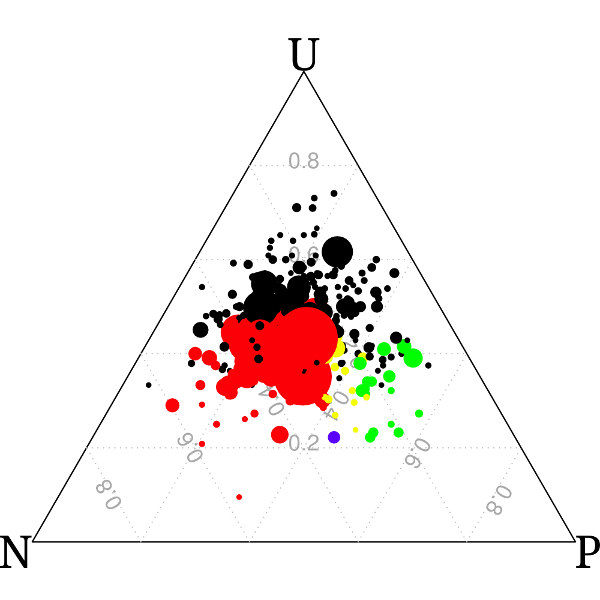
The Role of Emotions in Contributors Activity: A Case Study of the Gentoo Community
|
[2013]
|
|
Garcia, David;
Zanetti, Marcelo Serrano;
Schweitzer, Frank
|
In Proceedings of the International Conference on Social Computing and Its Applications,
pages: 410-417
|
more» «less
|
Abstract
We analyse the relation between the emotions and the activity of contributors in the Open Source Software project Gentoo. Our case study builds on extensive data sets from the project's bug tracking platform Bugzilla, to quantify the activity of contributors, and its mail archives, to quantify the emotions of contributors by means of sentiment analysis. The Gentoo project is known for a considerable drop in development performance after the sudden retirement of a central contributor. We analyse how this event correlates with the negative emotions, both in bilateral email discussions with the central contributor, and at the level of the whole community of contributors. We then extend our study to consider the activity patters on Gentoo contributors in general. We find that contributors are more likely to become inactive when they express strong positive or negative emotions in the bug tracker, or when they deviate from the expected value of emotions in the mailing list. We use these insights to develop a Bayesian classifier that detects the risk of contributors leaving the project. Our analysis opens new perspectives for measuring online contributor motivation by means of sentiment analysis and for real-time predictions of contributor turnover in Open Source Software projects.

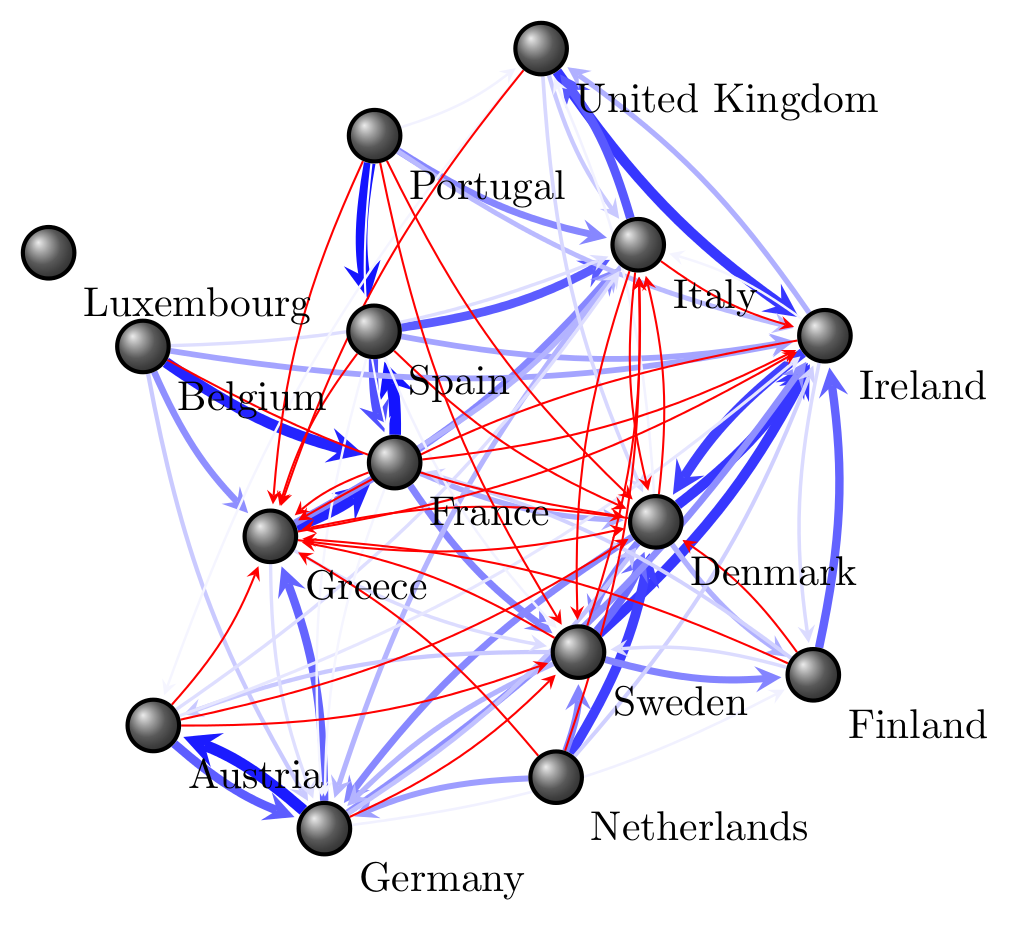
Measuring cultural dynamics through the Eurovision song contest
|
[2013]
|
|
Garcia, David;
Tanase, Dorian
|
ACS - Advances in Complex Systems,
pages: 33,
volume: 16,
number: 8
|
more» «less
|
Abstract
Measuring culture and its dynamics through surveys has important limitations, but the emerging eld of computational social science allows us to overcome them by analyzing large-scale datasets. In this article, we study cultural dynamics through the votes in the Eurovision song contest, which are decided by a crowd-based scheme in which viewers vote through mobile phone messages. Taking into account asymmetries and imperfect perception of culture, we measure cultural relations among European countries in terms of cultural anity. We propose the Friend-or-Foe coecient, a metric to measure voting biases among participants of a Eurovision contest. To validate how this metric represent cultural anity, we designed a model of a random, biased Eurovision contest. Simulations of this model show how our metrics can detect negative anities and serve as an estimator for positive anities. We apply this estimator to the historical set of Eurovision contests from 1975 to 2012, nding patterns of asymmetry and clustering in the resulting networks. Furthermore, we dene a measure of vote polarization that, when applied to empirical data, shows a sharp increase within countries of the EU during 2010 and 2011. As a result, we measure how the recent political decisions of EU states inuence the way their citizens relate to the culture of other EU members, leading to stronger cultural biases in the way they vote in the Eurovision song contest.


Damping sentiment analysis in online communication: Discussions, monologs and dialogs
|
[2013]
|
|
Thelwall, Mike;
Buckley, Kevan;
Paltoglou, George;
Skowron, Marcin;
Garcia, David;
Gobron, Stephane;
Ahn, Junghyun;
Kappas, Arvid;
Kuster, Dennis;
Janusz, A
|
In Proceedings of the 14th international conference on Computational Linguistics and Intelligent Text Processing
|
more» «less
|
Abstract
Sentiment analysis programs are now sometimes used to detect patterns of sentiment use over time in online communication and to help automated systems interact better with users. Nevertheless, it seems that no previouspublished study has assessed whether the position of individual texts within ongoing communication can be exploited to help detect their sentiments. This article assesses apparent sentiment anomalies in on-going communication – textsassigned significantly different sentiment strength to the average of previoustexts – to see whether their classification can be improved. The results suggestthat a damping procedure to reduce sudden large changes in sentiment can improve classification accuracy but that the optimal procedure will depend on thetype of texts processed.

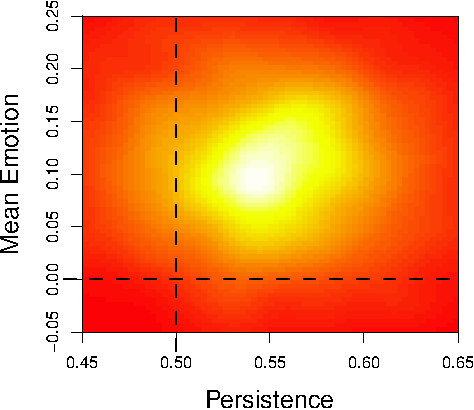
Dyads to Groups : Modeling Interactions with Affective Dialog Systems
|
[2013]
|
|
Rank, Stefan;
Skowron, Marcin;
Garcia, David
|
International Journal of Computational Linguistics Research,
pages: 22-- 32,
volume: 4,
number: 1
|
more» «less
|
Abstract
Affect Listeners are applied as tools for studying the role of emotions in online communication. They need to interact both in dyads as well as in group settings with multiple users. In this paper, we present the evolution of such affective dialog systems from a focus on dyadic interaction to multi-party interaction on chat networks. Starting from experiments on the use of these dialog systems in virtual dyadic settings, we outline the requirements, design and implementation decisions necessary to apply the systems to affective interactions with multiple users. Finally, we introduce two realisations of Interactive Affective Bots designed for such interaction scenarios that integrate modelling of individuals and groups as part of their decision mechanism.

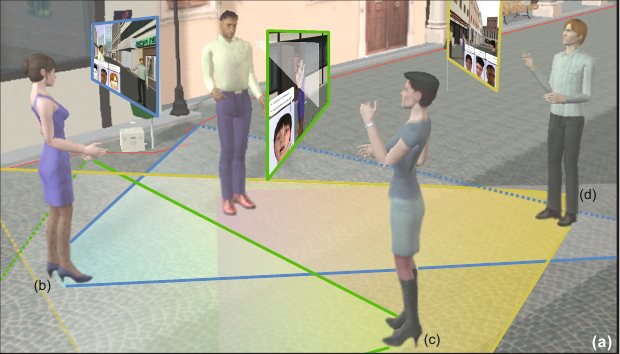
An event-based architecture to manage virtual human non-verbal communication in 3d chatting environment
|
[2012]
|
|
Gobron, Stephane;
Ahn, Junghyun;
Garcia, David;
Silvestre, Quentin;
Thalmann, Daniel;
Boulic, Ronan
|
Proceedings of the VII Conference on Articulated Motion and Deformable Objects 2012
|
more» «less
|
Abstract
Non-verbal communication (NVC) makes up about two-thirds of all communication between two people or between one speaker and a group of listeners. However, this fundamental aspect of communicating is mostly omitted in 3D social forums or virtual world oriented games. This paper proposes an answer by presenting a multi-user 3D-chatting system enriched with NVC relative to motion. This event-based architecture tries to recreate a context by extracting emotional cues from dialogs and derives virtual human potential body expressions from that event triggered context model. We structure the paper by expounding the system architecture enabling the modeling NVC in a multi-user 3D-chatting environment. There, we present the transition from dialog-based emotional cues to body language, and the management of NVC events in the context of a virtual reality client-server system. Finally, we illustrate the results with graphical scenes and a statistical analysis representing the increase of events due to NVC.

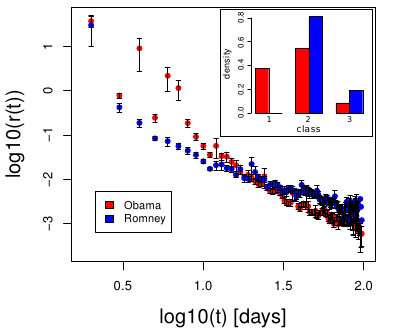
Political polarization and popularity in online participatory media : An integrated approach
|
[2012]
|
|
Garcia, David;
Mendez, Fernando;
Serdult, Uwe;
Schweitzer, Frank
|
In Proceedings of the Proceedings of the first edition workshop on Politics, elections and data - PLEAD '12
|
more» «less
|
Abstract
We present our approach to online popularity and its applications to political science, aiming at the creation of agentbased models that reproduce patterns of popularity in participatory media. We illustrate our approach analyzing a dataset from Youtube, composed of the view statistics and
comments for the videos of the U.S. presidential campaigns of 2008 and 2012. Using sentiment analysis, we quantify the collective emotions expressed by the viewers, finding that democrat campaigns elicited more positive collective emotions than republican campaigns. Techniques from computational social science allow us to measure virality of the videos of each campaign, to find that democrat videos are shared faster but republican ones are remembered longer inside the community. Last we present our work in progress in voting advice applications, and our results analyzing the
data from choose4greece.com. We show how we assess the policy differences between parties and their voters, and how voting advice applications can be extended to test our agentbased models.

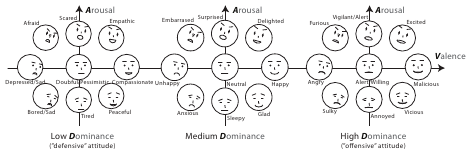
An nvc emotional model for conversational virtual humans in a 3d chatting environment
|
[2012]
|
|
Ahn, Junghyun;
Gobron, Stephane;
Garcia, David;
Silvestre, Quentin;
Thalmann, Daniel;
Bulic, Ronan
|
Proceedings of the VII Conference on Articulated Motion and Deformable Objects 2012
|
more» «less
|
Abstract
This paper proposes a new emotional model for Virtual Humans (VHs) in a conversational environment. As a part of a multi-users emotional 3D-chatting system, this paper focus on how to formulate and visualize the flow of emotional state defined by the Valence-ArousalDominance (VAD) parameters. From this flow of emotion over time, we successfully visualized the change of VHs’ emotional state through the proposed emoFaces and emoMotions. The notion of Non-Verbal Communication (NVC) was exploited for driving plausible emotional expressions during conversation. With the help of a proposed interface, where a user can parameterize emotional state and flow, we succeeded to vary the emotional expressions and reactions of VHs in a 3D conversation scene.


Positive words carry less information than negative words
|
[2012]
|
|
Garcia, David;
Garas, Antonios;
Schweitzer, Frank
|
EPJ Data Science,
pages: 3,
volume: 1
|
more» «less
|
Abstract
We show that the frequency of word use is not only determined by the word length [1] and the average information content [2], but also by its emotional content.We have analysed three established lexica of affective word usage in English, German, and Spanish, to verify that these lexica have a neutral, unbiased, emotional content. Taking into account the frequency of word usage, we find that words with a positive emotional content are more frequently used. This lends support to Pollyanna hypothesis [3] that there should be a positive bias in human expression. We also find that negative words contain more information than positive words, as the informativeness of a word increases uniformly with its valence decrease. Our findings support earlier conjectures about (i) the relation between word frequency and information content, and (ii) the impact of positive emotions on communication and social links.

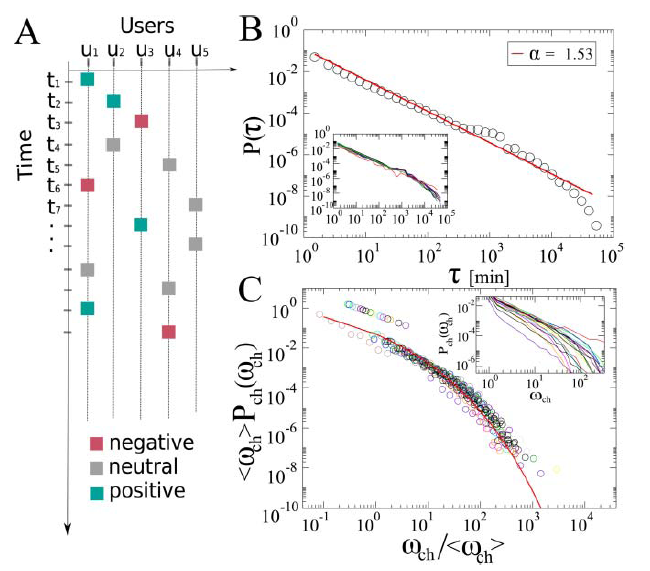
Emotional persistence in online chatting communities
|
[2012]
|
|
Garas, Antonios;
Garcia, David;
Skowron, Marcin;
Schweitzer, Frank
|
Scientific Reports,
pages: 402,
volume: 2
|
more» «less
|
Abstract
How do users behave in online chatrooms, where they instantaneously read and write posts? We analyzed about 2.5 million posts covering various topics in Internet relay channels, and found that user activity patterns follow known power-law and stretched exponential distributions, indicating that online chat activity is not different from other forms of communication. Analysing the emotional expressions (positive, negative, neutral) of users, we revealed a remarkable persistence both for individual users and channels. I.e. despite their anonymity, users tend to follow social norms in repeated interactions in online chats, which results in a specific emotional “tone” of the channels. We provide an agent-based model of emotional interaction, which recovers qualitatively both the activity patterns in chatrooms and the emotional persistence of users and channels. While our assumptions about agent's emotional expressions are rooted in psychology, the model allows to test different hypothesis regarding their emotional impact in online communication.

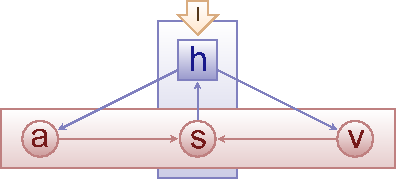
Modeling online collective emotions
|
[2012]
|
|
Garcia, David;
Schweitzer, Frank
|
Proceedings of the 2012 workshop on Data-driven user behavioral modelling and mining from social media-DUBMMSM '12, CIKM2012
|
more» «less
|
Abstract
A common phenomenon on the Internet is the appearance of collective emotions, in which many users share an emotional state. Online communities allow users to emotionally interact with large amounts of other users, creating collective states faster than in offline interaction. We present our modeling framework for collective emotions in online communities. This framework allows the analysis and design of agent-based models, including the dynamics of psychological states under emotional interaction. We illustrate the applications of our framework through an overview of two different models. Based on this framework, our first model of emotions in product reviews communities reproduces the empirical distribution of emotions towards products in Amazon. The second model within our framework reproduces the emergence of emotional persistence at the individual and collective level. This persistence pattern is similar to the one revealed by our statistical analysis of IRC chatrooms. Further applications of our framework aim at reproducing collective features of emotions in a variety of online communities.

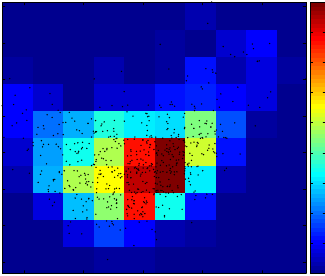
Emotions in product reviews – empirics and models
|
[2011]
|
|
Garcia, David;
Schweitzer, Frank
|
Proceedings of 2011 IEEE International Conference on Privacy, Security, Risk, and Trust, and IEEE International Conference on Social Computing, PASSAT/SocialCom,
pages: 483--488
|
more» «less
|
Abstract
Online communities provide Internet users with means to overcome some information barriers and constraints, such as the difficulty to gather independent information about products and firms. Product review communities allow customers to share their opinions and emotions after the purchase of a product. We introduce a new dataset of product reviews from Amazon.com, with emotional information extracted by sentiment detection tools. Our statistical analysis of this data provides evidence for the existence of polemic reviews, as well as for the coexistence of positive and negative emotions inside reviews. We find a strong bias towards large values in the expression of positive emotions, while negative ones are more evenly distributed. We identified different time dynamics of the creation of reviews dependent on the presence of marketing and word of mouth effects. We define an agent-based model of the users of product review communities using a modeling framework for online emotions. This model can reproduce the scenarios of response to external influences, as well as some properties of the distributions of positive and negative emotions expressed in product reviews. This analysis and model can provide guidelines to manufacturers on how to increase customer satisfaction and how to measure the emotional impact of marketing campaigns through reviews data.

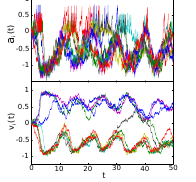
An agent-based model of collective emotions in online communities
|
[2010]
|
|
Schweitzer, Frank;
Garcia, David
|
The European Physical Journal B,
pages: 533-- 545,
volume: 77,
number: 4
|
more» «less
|
Abstract
We develop an agent-based framework to model the emergence of collective emotions, which is applied to online communities. Agent’s individual emotions are described by their valence and arousal. Using the concept of Brownian agents, these variables change according to a stochastic dynamics, which also considers the feedback from online communication. Agents generate emotional information, which is stored and distributed in a field modeling the online medium. This field affects the emotional states of agents in a non-linearmanner.We derive conditions for the emergence of collective emotions, observable in a bimodal valence distribution. Dependent on a saturated or a superlinear feedback between the information field and the agent’s arousal, we further identify scenarios where collective emotions only appear once or in a repeated manner. The analytical results are illustrated by agent-based computer simulations. Our framework provides testable hypotheses about the emergence of collective emotions, which can be verified by data from online communities.
Talks»
«Talks
Talks
Understanding social influence and inactivity patterns in the Twitter society
[July 10, 2017 - July 13, 2017]
International Conference on Computational Social Science
Collective Emotions, Collective Gatherings, and Emotional Synchronization
[July 5, 2017 - July 8, 2017]
18th General Meeting of the European Association of Social Psychology
Computational Social Science: Understanding human behavior through digital traces
[Dec. 15, 2016]
Online collective responses to the November 2015 Paris terrorist attacks
[Oct. 5, 2016]
Annual conference of the Association of Internet Researchers
Understanding Popularity, Reputation and Social Influence in the Twitter Society
[Sept. 23, 2016]
Internet, Policy, and Politics conference Oxford
Modeling and analysis of emotions in online interaction
[June 2, 2016]
Stanford University
How group identity and human-computer interaction shape online communication
[May 25, 2016]
IPAM, UCLA
The Dynamics of Emotions in Online Interaction
[May 19, 2016]
GESIS - Leibniz Institute for the Social Sciences
The QWERTY effect on the web: How typing shapes the meaning of words in online human-computer interaction
[April 15, 2016]
Geography of Emotion: Where in a City are People Happier?
[April 12, 2016]
WWW conference
Understanding human emotions and social interaction through the lens of computational social science
[Feb. 24, 2016]
Karlsruhe Service Summit Workshop
Assessing gender inequality in Wikipedia
[Sept. 29, 2015]
Wikipedia Conference, University of Geneva, Switzerland
Science Slam European Final
[Sept. 25, 2015]
Aula der Wissenschaften, Vienna, Austria
Studying Human Behavior through Digital Traces: Polarization and Emotions in the Bitcoin Ecosystem
[Sept. 17, 2015]
UC3M - Universidad Carlos III de Madrid, Madrid, Spain
Monitorización y analysis de actividad politica en redes sociales
[Sept. 16, 2015]
Spanish Parliament, Madrid, Spain
Trading and social signals in the Bitcoin ecosystem
[Sept. 15, 2015]
GESIS - Leibniz Institute for the Social Sciences, Cologne, Germany
Monitoring and analyzing political activity in social media
[Sept. 4, 2015]
NZZ Zurich, Switzerland
The positivity offset and the negativity bias of emotions in online communities
[July 7, 2015 - July 10, 2015]
ISRE conference, University of Geneva, Switzerland
Online Social Network Privacy as a Collective Phenomenon
[June 16, 2015]
Data for Policy Conference, Cambridge, UK
Gender Asymmetries in Reality and Fiction: The Bechdel Test of Social Media
[June 8, 2015 - June 11, 2015]
International Conference on Computational Social Science (ICCSS 2015), Helsinki, Finland
Trading and social signals in the Bitcoin ecosystem
[June 8, 2015 - June 11, 2015]
International Conference on Computational Social Science (ICCSS 2015), Helsinki, Finland
The digital traces of individual and collective emotions
[Dec. 17, 2014]
Affective Sciences Centre, University of Geneva
Computational social science: Studying and modelling humans through their digital traces
[Oct. 3, 2014]
Bell Labs Dublin
Online Privacy as a Collective Phenomenon
[Oct. 1, 2014 - Oct. 2, 2014]
ACM Conference on Online Social Networks (COSN'14)
Network polarization in online politics participatory media
[Sept. 26, 2014]
Internet, Policy & Politics Conference, University of Oxford, Oxford, UK
Political activity and network polarization in online participatory media
[Sept. 8, 2014]
GESIS, Cologne
Quantitative Analysis and Modeling of Collective Emotions in Online Communities
[June 6, 2014]
Reading Emotions Conference, University Zurich, Zurich, Switzerland
Gender Asymmetries in Reality and Fiction: The Bechdel Test of Social Media
[June 2, 2014]
8th International Conference on Weblogs and Social Media (ICWSM '14), University of Michigan, Ann Arbor, USA
Gender Asymmetries in Reality and Fiction
[May 22, 2014]
ETH Science Slam, ETH Zurich, Zurich, Switzerland
Political activity and polarization in Politnetz and Twitter
[May 10, 2014]
Hanse-Wissenschaftskolleg Delmenhorst, Bremen, Germany
Análisis de polarización, desigualdad y resiliencia social a través de huellas digitales
[April 25, 2014]
Universidad Autónoma de Madrid, Madrid, Spain
Gender Asymmetries in Reality and Fiction
[April 9, 2014]
Euraxess Roadshow Science Slam, ETH Zurich, Zurich, Switzerland
Understanding Collective Emotions in Online Communities Through Agent-Based Modelling
[March 27, 2014 - March 28, 2014]
Consortium of European Research on Emotion Conference 2014 (CERE 2014), Humboldt University Berlin, Berlin, Germany
Measuring Social Resilience and Polarization Through Digital Traces: The Autopsy of Friendster and the Eurovision Crisis
[Oct. 9, 2013]
CCNR seminar, Northeastern University, Boston
Social resilience in online communities: The autopsy of Friendster
[Oct. 7, 2013]
1st ACM Conference in Online Social Networks, Northeastern University, Boston
The Role of Emotions in Contributors Activity: A Case Study of the Gentoo Community
[Oct. 2, 2013]
Third International Conference on Social Computing and Its Applications, Karlsruhe, Germany
The Digital Traces of Social Resilience
[Aug. 31, 2013]
Scientifica Zelt at Polyterrasse, Zurich, Switzerland
Political Polarization in Participatory Media
[June 11, 2013 - June 12, 2013]
Non-Equilibrium Social Science Conference (NESS), ISCTE Lisbon University Institute, Lisbon, Portugal
Collective Emotions in the Internet Society
[June 7, 2013]
Global Brain Institute - Vrije Universieit Brussel, Brussels ,Belgium
A modelling framework for collective emotions in online communities
[Jan. 30, 2013]
Warsaw University of Technology, Warsaw, Poland
Political Polarization and Popularity in Online Participatory Media: An Integrated Approach, Workshop on Politic, Elections, and Data
[Nov. 2, 2012]
21st ACM International Conference on Information and Knowledge Management (CIKM'12), Maui, Hawaii, USA
Modeling Online Collective Emotions: Workshop on Data-driven User Behavioral Modelling and Mining from Social Media
[Oct. 29, 2012]
21st ACM International Conference on Information and Knowledge Management (CIKM'12) Maui, Hawaii, USA
Measuring the dynamics of individual emotions under online interaction through subjective and physiological responses
[Sept. 19, 2012 - Sept. 23, 2012]
Society for Psychophysiological Research (SPR) 52nd annual meeting, New Orleans, Lousiana, USA
Information content and emotional expression: positive words carry less information
[Sept. 7, 2012]
European Conference on Complex Systems (ECCS'12), Brussels, Belgium
Analysing cultural affinity through the Eurovision Song Contest. Workshop in Cultural and opinion dynamics: Modeling, Experiments and Challenges for the future
[Sept. 5, 2012]
European Conference on Complex Systems (ECCS'12), Brussels, Belgium
WP5 Research Update
[Jan. 18, 2012]
The Austrian Research Institute for Artificial Intelligence (OFAI) Cyberemotions Workshop, Vienna, Austria
Emotional communication patterns in online chat communities
[July 26, 2011 - July 29, 2011]
Plenary meeting of the International Society for Research on Emotion, Kyoto, Japan
Product Reviews and IRC Channel Analysis
[Jan. 20, 2011]
Project Workshop "Cyberemotions", Ljubljana, Slovenia
Modeling Collective Emotions in Online Communities
[Nov. 26, 2010]
Institute Jozef Stefan, Ljubljana, Slovenia
Modeling Collective Emotions in Online Communities
[Oct. 29, 2010]
Universidad Carlos III Madrid, Madrid, Spain
|




























































































